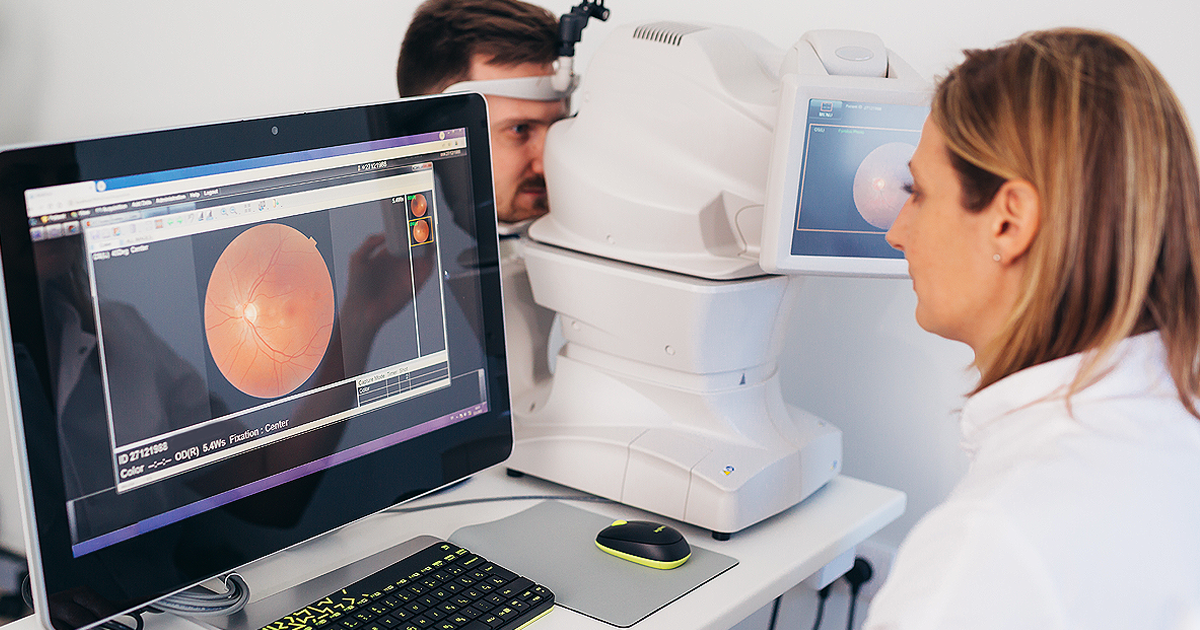Mental health is finally getting the attention it deserves in workplace wellness programs, especially since the pandemic has exacerbated many existing health conditions.1 But in addition to the stress of daily life, lack of vision care can just as easily contribute to depression and anxiety.
How vision impairment impacts mental health
Anyone can suffer vision loss, with severity levels ranging from nearsightedness to blindness. In fact, 196.5 million US adults (over 76%) use some form of vision correction.2,3 But people who have vision loss are more likely to suffer from depression,4 and young adults with vision loss are 5 times more likely to experience anxiety and depression than older adults.5 It adds up to 1 in 4 adults who have vision loss also report anxiety or depression.5
The reasons are many. Vision loss can make it harder for people to perform activities of daily living—such as walking, reading, cooking and driving.6 Vision loss has been linked to loneliness, social isolation – and feelings of worry, anxiety and fear.4
With surging screen time increasing the risk of eye conditions like Computer Vision Syndrome7, more mental health distress could be on the way.
Fortunately, offering vision care to your employees can help.
Vision loss and mental health by the numbers
- 196.5 million US adults—76%—use vision correction2,3
- 1 in 4 adults with vision loss report anxiety or depression5
- Young adults with vision loss are 5 times more likely than adults 65+ to experience anxiety or depression5
Vision care treats more than just the eyes
While many Americans experience poor vision, the good news is, much of it is treatable. Double vision, hyperopia (farsightedness), myopia (nearsightedness), amblyopia (lazy eye) and post-concussion vision impairment can all be managed with access to vision care. Cataract surgery alone has a massive impact on quality of life for the elderly, reducing psychiatric and somatic symptoms in addition to improving vision.4 But treatment to any vision disorder improves likeliness of recovery, independence and reengaging in social activities.
Better mental health isn’t the only surprising benefit of vision care: eye exams can also help detect serious health conditions sooner, like high blood pressure, diabetes, heart disease and high cholesterol.8 Untreated, chronic conditions can cost members (and their employer) thousands of dollars per year,9 while also affecting mental health due to medical costs and loss of independence. With early detection, many conditions become treatable or more manageable in daily life,10 which also supports better mental health. Together, primary care doctors and eye doctors can make a significant impact on a patient’s quality of life.
In conclusion
Keeping members’ eyes healthy ultimately supports your employees’ mental health. With 119,000+ providers in nearly 30,000 locations, the EyeMed network makes it easy for members to find a provider and schedule an exam.11
To learn more about how vision benefits can improve quality of life and help your employees prevent and treat serious health conditions, contact your EyeMed rep or visit eyemed.com.
••••
1 - The Mayo Clinic, “COVID-19 and your mental health,” November 2021.
2 - The Vision Council, “Optical Industry Market Update, VisionWatch Q3 2020 Report Highlights,” January 2021.
3 - US Census Bureau, “Population Under Age 18 Declined Last Decade,” August 2021.
4 - National Library of Medicine, “Visual Impairment and Mental Health: Unmet Needs and Treatment Options,” Dec. 2020.
5 – CDC, “Vision Loss and Mental Health,” Sept. 2021.
6 - National Library of Medicine, “Visual Impairment and Mental Health: Unmet Needs and Treatment Options,” Dec. 2020.
7 - 2021 Transitions Workplace Wellness Survey, Conducted by Wakefield Research for Transitions Optical.
8 - AARP, “8 Health Problems That Can Be Detected Through an Eye Exam,” November 2021.
9 - CDC, “Making the Business Case for Total Worker Health®,” August 2021.
10 - Patient Engagement Hit, “4 Patient Engagement Strategies to Close Patient Care Gaps,” April 2021.
11 – Provider and location count based on EyeMed Insight Network, December 2021.



